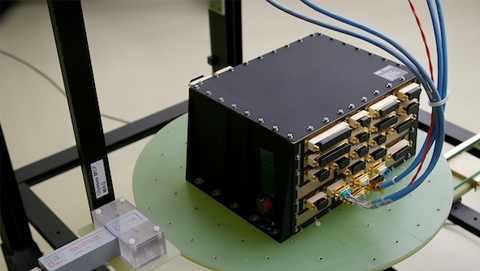Live coverage of LISA Pathfinder launch at Institute of Space Studies of Catalonia (IEEC)

19/11/2015
In the early hours of 3 December the LISA Pathfinder will be launched on a mission that will take it to the L1 Lagrange point, 1.5 million kilometres from Earth and in the direction of the sun. This location ensures the satellite will have the necessary solar energy to function and maintain a quasi-constant distance in order to communicate with Earth. Above all, this is a tranquil area of space, far from any massive body that could affect the satellite and the experiment.
From the UAB campus, the Institute of Space Sciences (ICE) will broadcast the launch live, and will show replays with commentary from its researchers over the whole morning. There will also be a chance to visit the laboratories with the engineering models that the ICE has contributed to LISA Pathfinder, and the control room used to monitor the research side of the mission. Visitors need to sign up in advance on the following website: http://gwart.ice.cat/index.php?id=news&post=lisa-pathfinder-launch-event.
LISA Pathfinder
With the LISA Pathfinder mission, the European Space Agency (ESA) aims to demonstrate the key technologies that could be used for the future observatory of gravitational waves eLISA.
Firstly however, in order to be able to detect gravitational waves, we must be able to measure the distance between two objects in free fall in space with extreme accuracy, unaffected by any other disturbance that might change their positions. In this way, if a gravitational wave passes between them, it will affect their separation and can be detected.
The complexity of this task is precisely the reason why ESA is obliged to first undertake a technological mission, a kind of general rehearsal to prove that it is really viable. This is a mission with an unprecedented level of technological refinement, using picometre resolutions (a billionth of a metre).
Much of this technology was developed by the Gravitational Wave Group of the Institute of Space Sciences (ICE), a centre run jointly by the Institute of Space Studies of Catalonia (IEEC) and the Spanish National Research Council (CSIC), based on the campus of the Universitat Autònoma de Barcelona, and the Department of Physics of the UAB. The ICE built the onboard computer, the diagnostic systems – of extreme stability and sensitivity – and the software to control both of these, in collaboration with the companies Sener and GMV and with other UAB centres, such as the Institute for High Energy Physics (IFAE).
The participation of ICE (IEEC-CSIC) in the LISA Pathfinder mission began over a decade ago and currently involves around ten researchers.